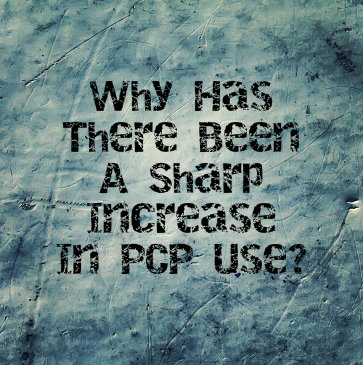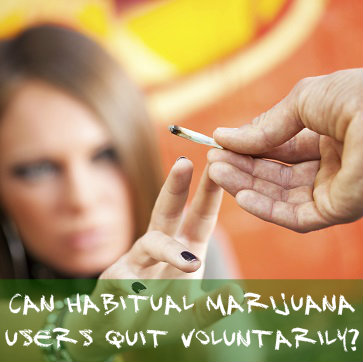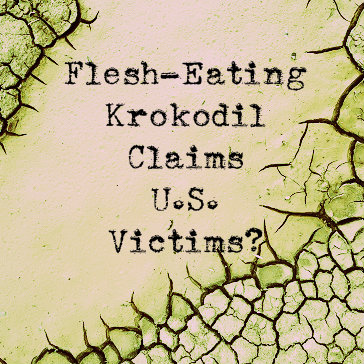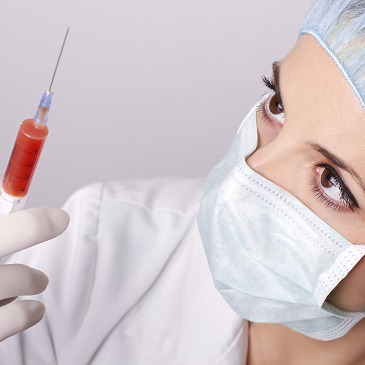13 Dec 2013
Why Has There Been A Sharp Increase In PCP Use?
The Substance Abuse and Mental Health Services Administration (SAMHSA) produces regular reports based on population groupings that track drug use trends in the United States. In a recent Drug Abuse Warning Network (DAWN) report, SAMHSA provided evidence of a sharp spike in PCP use.
Forms Of PCP
Phencyclidine, otherwise known as PCP or angel dust, is found in various forms, including crystal, capsule, tablet, powder and liquid. It’s often found in the form of marijuana and/or tobacco joint dipped in liquid PCP called a Sherm, which is named for Nat Sherman cigarettes. PCP first emerged in major U.S. cities in 1967, and by 1978 it was called the country’s number one drug problem on 60 Minutes.
PCP’s Recent Sharp Rise In Use
 Its popularity had dropped significantly throughout the 80s and 90s until, according to SAMHSA, PCP-related emergency room visits rose 400 percent between 2005 and 2011, and actually doubled from 2009 to 2011, from 36,719 to 75,538.
Its popularity had dropped significantly throughout the 80s and 90s until, according to SAMHSA, PCP-related emergency room visits rose 400 percent between 2005 and 2011, and actually doubled from 2009 to 2011, from 36,719 to 75,538.
Dangerous Effects Of PCP
The hallucinogen is considered to be exceptionally dangerous because users can become extremely violent. Users report feeling detached from their surroundings, with dangerous side effects including seizures, irregular breathing and comas. PCP is also addictive and can result in high levels of anxiety and suicidal thoughts.
The most significant increase by age was demonstrated among adults aged 25 to 34, with a 518 percent increase from 3,643 visits to 14,175. In 2011 males comprised 69 percent of the 75,538 ER room visits and 45 percent of the visits were by adults between the ages of 25 to 34. PCP was combined with other drugs 72 percent of the time: with one other substance in 37 percent of ER visits, two other substances in 18 percent and 3 or more substances another 18 percent.
Public Education Needed On PCP’s Dangers
The study authors explained PCP’s resurgence using the term “generational forgetting,” meaning that what once was widely recognized as a dangerous drug is now resurging due to an uneducated public.
The authors recommend targeting 25- to 34-year-olds for education and prevention efforts, including tobacco and marijuana awareness due to the possibility of cigarettes and joints being laced with PCP.
The findings of SAMHSA reports are used by many groups: policymakers access the reports to ensure that adequate substance abuse treatment facilities serve their communities; law enforcement personnel can use the data to determine where their efforts need to be focused and learn which substances may be most dangerous in their area of service; the findings are also used in clinical settings to develop useful screening tools for patients in order to detect the use of other substances or the presence of additional mental health concerns.
There may also be a need for increased training efforts among emergency department personnel related to recognize the signs and symptoms of PCP use and the recommendations for treatment.
Read More About The Risks Of Meth And IV Drug Use
Alcohol consumption is illegal for all teenagers in the U.S. Despite this fact, significant numbers of teenagers drink, and therefore expose themselves to a range of health risks and social problems of alcohol. In a study published in October 2013 in the Journal of Child & Adolescent Substance Abuse, researchers from the Pacific Institute for Research and Evaluation looked at the way young, alcohol-consuming teenagers alter their drinking patterns as they grow older. These researchers found that most young teens manage to avoid any increases in alcohol consumption over time, while a small but significant minority of young teens experience either moderate or heavy increases in their consumption levels.
Alcohol Consumption Rates In Young Teens
 In collaboration with the University of Michigan, the National Institute on Drug Abuse tracks American teenagers’ level of involvement in substance use with an annual survey project called Monitoring the Future. According to results compiled from the 2012 version of this project, roughly 16 percent of all U.S. eighth graders consume alcohol at least once monthly. This rate follows a downward trend that first began in the mid-1990s.
In collaboration with the University of Michigan, the National Institute on Drug Abuse tracks American teenagers’ level of involvement in substance use with an annual survey project called Monitoring the Future. According to results compiled from the 2012 version of this project, roughly 16 percent of all U.S. eighth graders consume alcohol at least once monthly. This rate follows a downward trend that first began in the mid-1990s.
Figures gathered from Monitoring the Future also indicate that roughly 6 to 7 percent of all eighth graders in the U.S. participate in a dangerous form of consumption called binge drinking in any given two-week period. Binge drinking gets its name because participants binge on enough alcohol (typically, five drinks or more for boys and four drinks or more for girls) to become legally drunk in two hours or less.
Risky Behaviors Associated With Early Alcohol Consumption
Alcohol consumption has a strongly negative impact on teenagers, especially young teenagers below the age of 14, the National Institute on Alcohol Abuse and Alcoholism reports. Examples of the risks associated with drinking at this early age include higher rates of involvement in car crashes and other accidents, higher risks for homicide and suicide, higher rates for victimization in violent criminal acts such as assaults and rapes, increased chances of participation in disruptive conduct while in school, increased chances for poor academic results, an earlier onset of participation in sexual activity and increased risks for the practice of unsafe sex.
In addition, teen boys and girls who drink before the age of 14 tend to participate in binge drinking rather than moderate alcohol consumption. Critically, they also become alcoholics fully four times more frequently than people who don’t drink until they reach legal age.
Changes In Consumption Over Time
In the study published in the Journal of Child & Adolescent Substance Abuse, the Pacific Institute researchers looked at the ways in which young teenagers change their alcohol intake patterns as they grow up. The researchers also looked at the factors that help predict an increase in alcohol consumption among young teens. They undertook their project because only a few prior research groups had examined drinking patterns in this particular age group. All told, the study included 5,903 middle school teens. The researchers began tracking these teens when they were sixth graders and continued to track them through the eighth grade.
After completing the study’s primary phase, the researchers found that there are four emerging patterns of alcohol intake in middle school teenagers. Slightly less than 50 percent of all teens in this age group avoid drinking altogether or only drink on fairly rare occasion. Slightly more than 29 percent of all middle school teens initiate experimental alcohol use and continue to drink, but only increase their consumption levels to a minor extent over time. Fifteen percent of all middle schoolers start drinking significantly earlier than their alcohol-using peers, but still manage to keep their intake levels low. Slightly more than 6 percent of all children in this age group initiate alcohol use, and then fairly quickly begin consuming enough alcohol to rank as “heavy” drinkers.
Underlying Factors Of Teen Alcohol Use
The researchers concluded that the single biggest factor in forming any given young teen’s alcohol use pattern is his or her level of belief in the ability to control his or her rate of alcohol consumption. Young teens who believe they can control their drinking-related behaviors tend to do so, while those who don’t believe they can control their drinking tend to experience a spike in intake. Other factors identified as contributors to a young teenager’s alcohol intake pattern include the relative level of peer pressure he or she experiences for or against drinking, as well as the relative level of positive or negative feelings he or she has toward the effects and benefits of drinking.
Learn More About Detoxing From Alcohol And Gain Your Life Back!
29 Nov 2013
Why ADHD And Drug Abuse Commonly Occur Together
According to psychiatric literature, as many as five percent of the American population deals with attention deficit hyperactivity disorder (ADHD), and half of those people may also have a problem with substance abuse. That’s because the two conditions frequently appear together, a relationship referred to as comorbidity. Because both stem from dysfunction in the reward system, it can be hard to untangle and treat the conditions simultaneously.
Connection Factors Between ADHD And Drug Addiction
 Past studies of twins have shown a high comorbidity between ADHD and drug addiction. These studies point to shared genes which make a person more susceptible to both conditions. When a person has a genetic predisposition combined with environmental risk factors, the likelihood of the two conditions arising increases. To compound the problem, other studies reveal that people with ADHD are at greater risk for earlier onset of drug abuse, more serious abuse and a harder time remaining abstinent.
Past studies of twins have shown a high comorbidity between ADHD and drug addiction. These studies point to shared genes which make a person more susceptible to both conditions. When a person has a genetic predisposition combined with environmental risk factors, the likelihood of the two conditions arising increases. To compound the problem, other studies reveal that people with ADHD are at greater risk for earlier onset of drug abuse, more serious abuse and a harder time remaining abstinent.
Diagnosing Adult ADHD
Both ADHD and substance abuse are diagnosed by using established tools which are essentially checklists of symptoms. In order to diagnose ADHD, a person must demonstrate a minimum of six symptoms of either hyperactivity or distractibility, but not necessarily symptoms in both categories. Doctors may be hesitant to diagnose adult ADHD, and even more so when a patient appears to be dealing with substance abuse as well, just because it requires a bit of detective work and a delicate balancing act in terms of treatment.
One way doctors can diagnose adult ADHD is by asking open-ended questions such as, “Why do you suspect that you may have ADHD?” this may result in symptoms being displayed without prodding. If this doesn’t happen right away, doctors can ask clarifying questions such as, “What does your work life look like?” or “Describe several of your closest relationships.” In terms of substance abuse, it is best to be forthright with questions such as, “Do you use any substances? “followed by, “Describe your substance use.”
A long-term picture will be the most accurate, so asking about grade school and high school experiences can be helpful. However, in some cases a parent may have performed the role of compensating presence – monitoring homework, ensuring the student was on time, helping them keep things organized, etc. – so with adult patients asking about college life or work life may actually provide the clearest idea of what symptoms are present. Whenever possible, having the added perspective of another person such as a spouse, parent or sibling is useful.
Symptoms Doctors Will Explore When Diagnosing ADHD
- Trouble focusing on a single task. The person has difficulty reading, leaves tasks unfinished, is not a good listener, engages in a lot of daydreaming and frequently loses things.
- Trouble staying focused. The person finds it hard to plan and organize. Time management is a problem issue. The person has difficult in recognizing potential consequences of actions.
- Trouble with motor control. The person exhibits restless, non-goal oriented movement and they can’t sit still for extended periods of time. It is important to note that the person who doodles and draws or who packs their daily schedule may also be showing signs of difficulty.
- Trouble with self-control. The person is impulsive, talking and acting without thinking. They frequently interrupt others and have little patience.
What These Brain-Function Symptoms Reveal
Each of these symptoms reveals sluggishness within the brain’s mesolimbic dopamine system, or reward pathway. Healthy people feel a certain amount of elation when they embrace another, hear beautiful music or engage in fun physical activity, and the reward circuitry in the brain is pre-set to respond positively to these things. When a person has an ill-functioning reward system, they may engage in riskier behaviors in order to stimulate or activate the reward response.
Treatment For ADHD And Substance Abuse
Drug use exacerbates this problem. Therefore, the best treatment will result from a multi-pronged approach. Persons with comorbid ADHD and substance abuse will probably require individual counseling, support group therapy, carefully monitored medication therapy and specific lifestyle changes.
Read More About Addiction And Mental Disorders
27 Nov 2013
Can Habitual Marijuana Users Quit Voluntarily?
 Cannabis is a THC-containing plant species known for its ability to produce strong mental and physical alterations when smoked or ingested. Substantial numbers of cannabis users develop symptoms of drug addiction, especially when they take the drug daily or start using the drug early in life. In a study published in October 2013 in the journal Drug and Alcohol Dependence, researchers from two U.S. universities examined the considerations that affect a habitual cannabis user’s ability to voluntarily stop his or her drug intake. These researchers identified three specific factors—withdrawal symptoms, peer pressure and negative mental states—that play prominent roles in the success or failure of self-initiated cannabis cessation attempts.
Cannabis is a THC-containing plant species known for its ability to produce strong mental and physical alterations when smoked or ingested. Substantial numbers of cannabis users develop symptoms of drug addiction, especially when they take the drug daily or start using the drug early in life. In a study published in October 2013 in the journal Drug and Alcohol Dependence, researchers from two U.S. universities examined the considerations that affect a habitual cannabis user’s ability to voluntarily stop his or her drug intake. These researchers identified three specific factors—withdrawal symptoms, peer pressure and negative mental states—that play prominent roles in the success or failure of self-initiated cannabis cessation attempts.
Cannabis gets its name from a plant species called Cannabis sativa L., which has two subtypes, known as Cannabis sativa and Cannabis indica. While C. sativa and C. indica have somewhat differing effects on the human body, they both derive their main mental and physical impact from the presence of a chemical compound called tetrahydrocannabinol (THC). A number of compounds related to THC also contribute to cannabis’s mind- and body-altering properties. Most people are passingly familiar with a form of cannabis called marijuana, which is made from dried, unconcentrated C. sativa or C. indica leaves, flowers and stems. Less commonly available cannabis products include concentrated substances called hashish and hashish oil.
Cannabis Abuse And Addiction
On a federal level, cannabis products are illegal in the U.S. in any setting. For this reason, any form of marijuana, hashish or hashish oil use can reasonably be construed as drug abuse. However, from a medical perspective, cannabis abuse occurs in people whose non-addicted cannabis intake substantially interferes with the ability to participate in everyday life. Cannabis addiction occurs in people who become chemically dependent on the effects of THC, then go on to develop behavioral patterns strongly centered on obtaining and using cannabis. According to standards set by the American Psychiatric Association in 2013, cannabis abusers and cannabis addicts have a single condition called cannabis use disorder.
Roughly nine out of every 100 marijuana users will develop an addiction to the drug, the National Institute on Drug Abuse reports. This rate nearly doubles among users who begin their intake of the drug during or before their teenage years. In addition, long-term, daily marijuana users have addiction rates that fall between 25 percent and 50 percent. Anyone addicted to marijuana, hashish or hashish oil can develop cannabis withdrawal when they rapidly reduce or discontinue their drug intake.
Cannabis Withdrawal Symptoms
- Recurring cannabis cravings
- Heightened anxiety levels
- Decline in appetite
- Trouble sleeping
- Unusually agitated or irritated disposition
Factors That Affect Voluntary Cessation From Marijuana Use
In the study published in Drug and Alcohol Dependence, researchers from the University of Houston and Louisiana State University looked at the various factors that can increase or decrease a person’s ability to voluntarily stop smoking or ingesting cannabis. This assessment involved a group of 30 adult cannabis users attempting to halt their drug intake; the vast majority of these individuals (84 percent) had clear symptoms of cannabis use disorder. During each day of the two-week study, all of these participants gave regular reports of their positive and negative mental states, level of cannabis withdrawal symptoms, level of cannabis use among their peer groups and conscious reasons for failing to halt cannabis use or returning to cannabis use after beginning cessation efforts.
Effects Of Quitting Marijuana Smoking
After reviewing the reports submitted by the study participants, the researchers found that people attempting to voluntarily stop using cannabis commonly experience a spike in their level of withdrawal symptoms, as well as a spike in their experience of unusually negative states of mind. The researchers also found that people going through voluntary cessation while associating with cannabis-using peers have substantially more exposure to the drug than people who typically used the drug on their own in the past. In combination, these three factors (prominent withdrawal symptoms, a negative mental outlook and peer-related exposure to cannabis) present strong obstacles to successful self-initiated cessation efforts among cannabis users.
Why Marijuana Smokers Continue Using
When asked why they continued or returned to cannabis use, the participants in the study published in Drug and Alcohol Dependence listed a desire to avoid negative mental states as their main conscious reason. The authors of the study note that most people attempting to voluntarily stop using cannabis try to support their efforts by modifying their behavioral patterns and staying away from the drug, not by altering their cannabis-related beliefs or thought processes.
Are Marijuana Users Bad At Tracking How Much They Smoke? Find Out In This Fascinating And Informative Post
Cannabis is the umbrella term for the mind-altering products marijuana, hashish and hashish oil, which come from the cannabis group of plant species. All of these products create substantial risks for physical dependence and addiction when used regularly for relatively extended amounts of time. Cannabis use also comes with a known risk for psychosis and certain other mental health problems. In a study published in August 2013 in the journal Addiction, a team of Dutch researchers looked at the relative risks for mental illness in dependent/addicted marijuana users and users unaffected by dependence/addiction. The researchers concluded that the mental illness risks in these populations differ in substantial ways.
What Exactly Is Cannabis?
 Marijuana comes from dried, non-concentrated parts of Cannabis plants such as the leaves, stems and flowers. Hashish and hashish oil, on the other hand, come from the purposeful concentration of these plant parts. All three of these cannabis-based products contain the same active ingredient, known informally as THC and formally as tetrahydrocannabinol. THC triggers changes in brain function that create the classic effects of cannabis intoxication, including altered thinking and sensory perception, a rise in pleasurable feelings, appetite increases, reduced clarity in several major areas of consciousness, and a reduced ability to move the body’s muscles in an efficient, controlled manner.
Marijuana comes from dried, non-concentrated parts of Cannabis plants such as the leaves, stems and flowers. Hashish and hashish oil, on the other hand, come from the purposeful concentration of these plant parts. All three of these cannabis-based products contain the same active ingredient, known informally as THC and formally as tetrahydrocannabinol. THC triggers changes in brain function that create the classic effects of cannabis intoxication, including altered thinking and sensory perception, a rise in pleasurable feelings, appetite increases, reduced clarity in several major areas of consciousness, and a reduced ability to move the body’s muscles in an efficient, controlled manner.
Marijuana’s Dependence And Addiction
Despite its reputation as a relatively harmless, “natural” substance, THC can make substantial alterations in a person’s long-term brain function when used repeatedly or habitually over time. These changes in function can eventually make the brain “see” the presence of THC as a chemical norm rather than a rare or occasional event. When this situation arises, the affected individual has what’s known as a physical dependence on the effects of cannabis/THC. By itself, physical dependence on a substance does not necessarily constitute a dangerous or harmful situation. However, when combined with persistent drug-seeking behaviors and other disruptive or dysfunctional actions, dependence establishes the necessary groundwork for the onset of a drug addiction.
Mental Health Risks Of Marijuana Use
While under the temporary influence of cannabis products, users commonly experience short-term symptoms that closely approximate psychosis, an altered mental state (classically associated with schizophrenia and schizophrenia-related illnesses) that primarily features delusional thought processes and/or some sort of sensory hallucination. In some cases, regular users develop a more extended form of psychosis that continues as long as a pattern of cannabis intake continues. In addition, current evidence strongly indicates that habitual cannabis users have increased long-term chances of developing diagnosable cases of schizophrenia or depression that continue to exert their effects even when a pattern of cannabis intake stops.
In the study published in Addiction, researchers from the University of Amsterdam and the Netherlands Institute of Mental Health and Addiction sought to determine if people physically dependent on cannabis have higher risks for developing mental health issues than cannabis users unaffected by dependence. They made this determination by tracking the mental health diagnoses of 252 young adults affected by cannabis dependence, as well as the diagnoses of 269 young adult, non-dependent cannabis users. For comparison’s sake, they also tracked the mental health diagnoses of over 1,000 non-cannabis-using young adults. The researchers did not attempt to differentiate issues of cannabis dependence from issues of cannabis addiction.
Effects On Mental Illness In Dependent vs. Non-Dependent Marijuana Users
After reviewing the gathered data, the researchers found that both dependent and non-dependent cannabis users have a higher rate of mental illness than people who don’t use cannabis at all. They also found that dependent and non-dependent cannabis users are similar in most ways and share comparable patterns of general cannabis use, patterns of other forms of substance use and histories of problematic or traumatic childhoods. While dependent cannabis users have a higher overall rate of mental illness than non-dependent users, non-dependent users have higher rates than dependent users for illnesses called externalizing disorders, which include attention-deficit/hyperactivity disorder (ADHD), oppositional defiant disorder and conduct disorder. Conversely, dependent users have particularly high rates for illnesses called internalizing disorders, which include mood disorders (depressive and bipolar illness) and a range of conditions referred to together as anxiety disorders.
Most of the difference in the mental illness rates between dependent and non-dependent cannabis users disappeared when the authors of the study published in Addiction took certain secondary factors into account, including the use of other substances and the presence of traumatic or problematic childhoods. However, even with these adjustments, dependent users still have higher illness rates than non-dependent users. Except for the spike in their rates for ADHD, oppositional defiant disorder and conduct disorder, non-dependent cannabis users have mental health profiles that closely resemble the profiles found among people who don’t use cannabis.
20 Nov 2013
Flesh-Eating Krokodil Claims U.S. Victims?
Desomorphine, also known by the Russian nickname Krokodil or the English language equivalent Crocodile, is a synthetic substance based on the opioid narcotic drug morphine. This drug, outlawed in America, has much stronger chemical effects than morphine and produces severe side effects in long-term users that can include tissue destruction, limb loss or death. Desomorphine users commonly take a homemade form of the drug that contains one or more additional toxic substances. Until recently, desomorphine abuse was not known to affect any segment of the U.S. population. However, in September 2013, the country’s first identified cases of this abuse allegedly occurred in Phoenix, Arizona.
Desomorphine Basics
 Morphine is an opioid substance taken directly from the sap of a plant called Papaver somniferum (commonly referred to as the opium poppy). Like all other natural and synthetic opioids, it achieves powerful, potentially addicting drug effects by accessing key portions of the brain and creating intense spikes in pleasure levels, as well as a reduced ability to feel pain. Desomorphine was invented in a laboratory setting in the 1930s by changing morphine molecules’ natural chemical structure. Compared to morphine, it produces roughly 10 times the level of effect at any given dose. This drug effect comes on rapidly and also fades away in a relatively short amount of time.
Morphine is an opioid substance taken directly from the sap of a plant called Papaver somniferum (commonly referred to as the opium poppy). Like all other natural and synthetic opioids, it achieves powerful, potentially addicting drug effects by accessing key portions of the brain and creating intense spikes in pleasure levels, as well as a reduced ability to feel pain. Desomorphine was invented in a laboratory setting in the 1930s by changing morphine molecules’ natural chemical structure. Compared to morphine, it produces roughly 10 times the level of effect at any given dose. This drug effect comes on rapidly and also fades away in a relatively short amount of time.
Even in its most chemically pure form, desomorphine is capable of producing significant damage when used repeatedly over time. The most common side effect of chronic use—a form of blood vessel and soft tissue damage that results in green, scaly skin—gives the drug its nickname, Krokodil (Crocodile). If left untreated, desomorphine-related vessel and tissue damage can ultimately result in tissue death (gangrene) or a clot- and inflammation-based ailment called thrombophlebitis. People with these conditions can lose their affected limbs to amputation or even die. Doctors can potentially combat the active drug effects of desomorphine with the anti-narcotic medication naloxone or other treatments used to address heroin addiction. However, there is no specific, fully developed treatment for the drug. In addition to dealing with the brain effects of desomorphine addiction, doctors commonly need to address the severe physical injuries associated with the drug’s use.
Desomorphine Abuse
Today, desomorphine abuse doesn’t typically involve batches of the drug made in a laboratory. Instead, most users make an injectable form of the drug themselves by boiling tablets of another opioid narcotic, called codeine, then combining the resulting liquid with any one of a number of additional toxic additives, including gasoline, red phosphorus, hydrochloric acid or paint thinner. Together, these substances can produce a level of blood vessel and tissue damage far above that associated with pure desomorphine, and users can develop large pockets of rotting flesh or even lose their flesh all the way down to the bone. Current evidence indicates that chronic users of “bootleg” Krokodil commonly die within a period of two or three years.
International Patterns of Krokodil Usage
The first known cases of bootleg Krokodil abuse occurred among heroin users in Russia in 2003. These users were looking for a cheaper alternative to the normally available narcotics in their country. According to current estimates, roughly 1 million people in Russia and another million people in other European regions use the drug. However, these estimates are likely quite imprecise, and no one really knows how many people in Europe or other areas across the globe take some form of Krokodil. In the U.S., desomorphine belongs to a highly restricted class of substances called Schedule I substances. All drugs with this federal classification are illegal, present a strong potential for the onset of abuse and/or addiction, and have no accepted usefulness in medical treatment. Still, some amount of pharmaceutical-grade desomorphine likely enters the U.S. through illegal Internet sales or other unlawful avenues. Americans also have access to the materials required to make bootleg desomorphine.
First Krokodil Cases In The U.S.
In September 2013, a poison control center in Phoenix, Arizona, reported two cases of Krokodil abuse among local residents. The directors of this facility believe that the cases in question are related, a situation that indicates that use of the drug is not widespread. However, since they represent the first nationally reported incidences of Krokodil abuse in the U.S., the two cases are naturally garnering significant amounts of scrutiny and media attention. As of now, no one can truly say what course the use of homemade desomorphine will take among American IV drug abusers in the years and decades to come.
Read More About The Zombie Drug Finding It’s Way To The U.S.
Addiction is a complicated disease. For those of us who have never had an addiction, it can be easy to wonder why addicts can’t seem to make the decision to stop using and then do it. There are complicated brain chemical pathways that are affected by drugs and alcohol that lead to addiction and that make it almost impossible to stop using. Modern research has uncovered much of the role of the brain in addiction, but more recently has found that the immune system is also important.
The Immune System And The Brain
 Your body’s immune system is a complex network of different types of cells that are dedicated to protecting you from foreign invaders that cause sickness. Many of those immune cells live in the brain. These are called glial cells and they work alongside your neurons, or brain cells. The brain cells and immune cells that work together to regulate the responses of the immune system are called collectively, the neuroimmune system. This system keeps the brain healthy and mediates communication between the immune system and the central nervous system.
Your body’s immune system is a complex network of different types of cells that are dedicated to protecting you from foreign invaders that cause sickness. Many of those immune cells live in the brain. These are called glial cells and they work alongside your neurons, or brain cells. The brain cells and immune cells that work together to regulate the responses of the immune system are called collectively, the neuroimmune system. This system keeps the brain healthy and mediates communication between the immune system and the central nervous system.
Addiction’s Effects On The Neuroimmune System
Parts of the neuroimmune system are activated by various factors. Stress is one factor, which is why the feeling of being stressed can actually make you physically sick. Alcohol and drugs also trigger responses in the neuroimmune system. The responses can lead to disrupted decision making. This helps to explain why addicts make choices about using even when doing so is bad for them.
The response of the neuroimmune system to drugs and alcohol also changes a person’s affect and causes feelings of depression. Again, these feelings are characteristic of addiction. Researchers have even found that people with certain genetic variations in their neuroimmune system are more likely than others to succumb to addiction.
Innovative Addiction Treatments
With the increased understanding of how the immune system in the brain impacts addiction, researchers are able to come up with new treatments for this devastating disease. One such possible treatment may help addicts who use opioids like heroin and prescription painkillers. Studies have found that morphine, an opioid drug, binds to a certain immune system receptor that changes the dopamine pathway in the brain.
Dopamine is the brain chemical that is released when we feel something pleasurable. Drugs release huge floods of dopamine, which plays a role in developing addictions. The researchers hope that if they can block the immune receptor with a medication, they can stop the release of dopamine when someone uses an opioid. With no pleasurable sensation, there would be no addiction.
Methamphetamine is another seriously addictive drug that can be just as hard to quit as opioids. Research has shown how the drug negatively impacts the immune system of the user, so new studies have focused on targeting the immune system for treatment medications. A drug being developed for a variety of immune diseases may also help meth addicts. The drug reduces the immune response in the brain, which could help meth addicts feel better. One major hurdle to quitting is that the users feel awful when they give up meth. With the new medication, they may feel better, and less inclined to going back to using.
Other researchers have tackled cocaine addiction by working with the immune system. The new treatment is actually a vaccine. The researchers who developed it created a vaccine that would target cocaine and treat it as if it were an invader like a virus or bacterium. After being injected with the vaccine, mice in laboratory experiments showed an immune response that tackled any cocaine in the body. The result was that the mice did not get a high from cocaine. If the vaccine works in human trials, it could help addicts stop using. If they get no high, there will be no reason to use the drug.
The exciting field of addiction and the immune system is coming up with new information about the disease of addiction every day. With this new knowledge, researchers are able to create treatments that are medically- and evidence-based that may truly help people recover from addiction.
Adolescence is a time of change and self-discovery. For some teens this change involves experimentation with substances, or perhaps even the development of alcohol or drug addiction. That seems to be particularly true for lesbian, gay, bisexual, and transgender (LGBT) teens, a group that shows alarming rates of substance abuse and addiction. If you’re a parent or caregiver, keep reading to learn more about why LGBT teenagers have higher rates of substance abuse and what you can do to help.
LGBT Teen Addiction Statistics
 Research consistently shows that lesbian, gay, bisexual, and transgender teens abuse substances at higher rates than their heterosexual peers. Overall, the odds of abusing substances are 190% higher for LGBT teens than for teens that are heterosexual. However, alcohol and drug use rates are even higher in specific LGBT populations. Bisexual youth have substance abuse rates that are 340% higher than heterosexuals, while females have rates that are 400% higher [1].
Research consistently shows that lesbian, gay, bisexual, and transgender teens abuse substances at higher rates than their heterosexual peers. Overall, the odds of abusing substances are 190% higher for LGBT teens than for teens that are heterosexual. However, alcohol and drug use rates are even higher in specific LGBT populations. Bisexual youth have substance abuse rates that are 340% higher than heterosexuals, while females have rates that are 400% higher [1].
This doesn’t mean that every non-heterosexual teen will become addicted. In fact, research suggests some of the lowest levels of substance abuse are found among students, regardless of sexual orientation, who do not experience homophobic teasing and feel they are in a positive school environment [2].
The Link Between LGBT Teens And Addiction
Identifying as a non-heterosexual person does not in itself lead to alcohol or drug addiction. However, LGBT youth may be forced to deal with unique challenges; it’s these challenges that can raise their risk of addiction significantly.
For instance, lesbian, gay, bisexual, and transgender teenagers are at higher risk for bullying from their peers. Whether the bullying behavior involves being pushed around in a hallway or being victimized on Facebook, it can isolate an adolescent and lead to feelings of depression, which is a risk factor for substance abuse. One study found that teens bullied because they were perceived as gay were more likely to be depressed than those bullied for other reasons or not at all [3].
The threat of violence against LGBT people might also drive a teen to make unhealthy choices that include alcohol or drug abuse. About 21% of all hate crimes in 2011 were based on the victim’s sexual orientation, according to the FBI. Of those, 60% were attacks specifically against gay men and 11% targeted lesbians [4]. Adolescents who feel threatened may also feel the need to self-medicate their severe stress and anxiety with alcohol or drugs.
Parental rejection may also contribute to an LGBT teen’s alcohol or drug addiction. For example, young adults who were rejected by parents for their sexuality during adolescence were almost 4 times more likely to use illicit drugs than those who didn’t experience rejection [5].
Community factors can play a role as well. A study of non-heterosexual adults found that those who lived in states that banned same-sex marriage had a 42% increase in alcohol use disorders [6]. While this particular study examined adults, it’s possible that living in an environment that actively rejects an LGBT teenager’s identity can spur substance abuse.
How To Help LGBT Teens
As a parent or caregiver, it’s essential to help a teenager struggling with substance abuse. Excessive use of alcohol or the abuse of prescription or illicit drugs lays the foundation for a life that’s spent dealing with an addiction rather than living up to potential. Addiction is a chronic mental health condition, although with treatment it can be managed and even overcome. Finding help now gives your teen an opportunity to get back onto a healthier path before an accident or overdose makes it too late.
Seek professional help. Alcohol and drug abuse should be treated by qualified professionals. If possible, choose a recovery facility skilled in working with LGBT youth. These centers will have expertise in helping a lesbian, gay, bisexual, or transgender addict deal with situation-specific emotions and behaviors that play a role in his or her addiction. For example, a rehab center with an LGBT program will work with your teen on matters dealing with sexuality, sexual identity, gender identity, and family dynamics.
If you cannot locate alcohol or drug addiction treatment specifically for an LGBT addict, don’t give up hope. A qualified addiction center can still treat your teen for substance abuse. You’ll work with a specialist to develop a treatment plan that addresses your teenager’s needs. Depending on the substance, he or she may need detoxification (detox) as well as therapy. Since teenagers are heavily influenced by their peers, it’s normal for addicted teens to require residential rehab so they can fully immerse themselves in a safe, substance-free environment.
Substance abuse aftercare is also a critical part of maintaining sobriety in adolescents. Addiction aftercare, which will likely include therapy, ensures that a teen addict continues to have access to the tools that help him or her stay in recovery. In addition, LGBT teens are particularly vulnerable to bullying and, in some cases, violent attacks because of their sexual identity. An aftercare program will help a teenager cope with those challenges in a healthy way.
Create a supportive home. Researchers have found that parental rejection during an LGBT teen’s adolescence boosts the risk of substance abuse. Consider how you or other caregivers have reacted to your teenager’s identification as non-heterosexual. If you or a spouse has reacted with disappointment or anger, or if you’ve rejected the teen outright, start educating yourself in order to better understand your own feelings. Support groups for LGBT parents can be an ideal resource for those struggling to accept a non-heterosexual teenager. You’ll find beneficial support from parents who have experienced the same emotions and challenges.
Encourage your teen to connect. Support from others in the LGBT community will nurture your teenager in a positive way. Building friendships with those who are going through the same life experiences will help him or her feel less isolated. Be sure, however, that these connections are the kinds that encourage sobriety and a healthy lifestyle.
Alcohol and drug addiction can ruin the life of your teen. Don’t wait to get help. Reach out to treatment professionals who are experienced in working with LGBT . Doing so will give your son or daughter the best chance to have an addiction-free life.
References:
[1] http://www.ncbi.nlm.nih.gov/pmc/articles/PMC2680081/
[2] http://www.cdc.gov/lgbthealth/youth.htm
[3] http://library.wheelerclinic.org/poc/view_doc.php?type=news&id=155391&cn=5
[4] http://www.fbi.gov/about-us/cjis/ucr/hate-crime/2011/narratives/incidents-and-offenses
[5] http://pediatrics.aappublications.org/content/123/1/346.abstract
[6] http://ajph.aphapublications.org/doi/abs/10.2105/AJPH.2009.168815


